| S-32 | |
|---|---|
 | |
| Role | Utility |
| National origin | United States |
| Manufacturer | Sikorsky |
| First flight | 1926 |
| Introduction | 1926 |
| Number built | 1 |
The Sikorsky S-32 was an American single engine aircraft built by the Sikorsky Manufacturing Corporation in 1926.
| S-32 | |
|---|---|
 | |
| Role | Utility |
| National origin | United States |
| Manufacturer | Sikorsky |
| First flight | 1926 |
| Introduction | 1926 |
| Number built | 1 |
The Sikorsky S-32 was an American single engine aircraft built by the Sikorsky Manufacturing Corporation in 1926.
The S-32 was a large single-bay sesquiplane using parallel interplane struts and bracing wires with three open cockpits, the rearmost cockpit for a pilot and two forward cockpits capable of holding two passengers each. The fuselage and wing were constructed from metal and covered with fabric. Powered by a 400 horsepower (298 kilowatts) Liberty L-12 water-cooled V-12, it was built for the Andean National Corporation to explore Colombia and served as a floatplane fitted with pontoons. [1] [2]
Data from1000aircraftphotos [1]
General characteristics
Performance

The Sikorsky S-29-A was a twin-engine sesquiplane airliner, first flown in 1924. It was the first aircraft that aviation pioneer Igor Sikorsky designed and built after coming to the United States, hence the special "-A" suffix signifying "America". The aircraft made many successful long range flights, most of which Sikorsky piloted himself. The S-29-A claims a number of "firsts" in aviation including the first twin engine aircraft capable of maintaining altitude on one engine, the first aircraft to broadcast a radio musical program in-flight, in 1925 and in 1926 the first aircraft to display a motion picture in flight. The S-29-A was also one of the first aircraft to make use of an airstair door, located on the starboard side of the fuselage.

The Kinner R Playboy was a 1930s American two-seat sporting monoplane built by Kinner Airplane & Motor Corporation.

The Douglas Cloudster was a 1920s American biplane aircraft. It was the only product of the Davis-Douglas Company, and was designed to make the first non-stop flight coast-to-coast across the United States.

The International F-17 Sportsman was a 1920s American three-seat open-cockpit biplane designed and manufactured by the International Aircraft Corporation in Long Beach, California and Cincinnati, Ohio. 107 aircraft were built, 77 of them at Cincinnati.

The Heinkel HD 17 was a military reconnaissance aircraft produced in Germany in the late 1920s.

The Douglas DF was a commercial flying boat built by Douglas Aircraft Company, first flown on 24 September 1936.
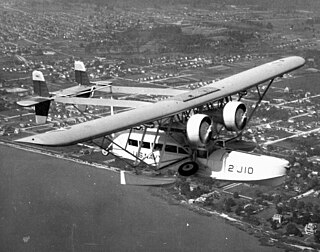
The Sikorsky S-41 was an amphibious flying boat airliner produced in the United States in the early 1930s. Essentially a scaled-up monoplane version of the Sikorsky S-38 biplane flying boat, Pan Am operated the type on routes in the Caribbean, South America, and between Boston and Halifax.
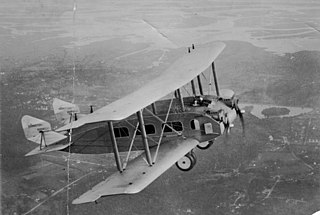
The Burnelli RB-1 was a US twin engine biplane airliner prototype from 1920, incorporating a lifting body fuselage.

The Lincoln Standard L.S.5 was a modification of the Standard J biplane to accommodate 5 passengers marketed by the Lincoln Aircraft Company.
The Friesley Falcon was a twin engine, 12 passenger biplane airliner, designed and flown in the United States in 1921. The only example built was later sold to China.
The Sawyer Skyjacker II is an American homebuilt aircraft that was designed and produced by Ralph V. Sawyer of Lancaster, California, in 1974. The aircraft was intended as a research project and as such only one was built.
The Starfire Firebolt, sometimes called the Starfire Firebolt Convertible, due to its removable canopy, is an American homebuilt aerobatic biplane that was designed by G. H. "Mac" McKenzie and produced by Starfire Aviation of Tempe, Arizona. When it was available the aircraft was supplied in the form of plans for amateur construction, with some pre-fabricated parts available.
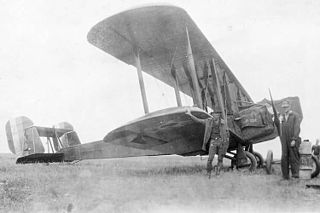
The Curtiss Model 36 XNBS-4 was a 1920s prototype biplane night bomber built by the Curtiss Aeroplane and Motor Company for the United States Army Air Corps.
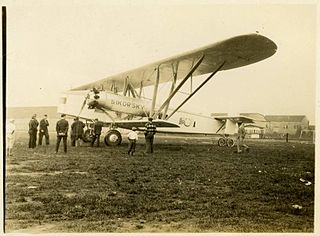
The Sikorsky S-37 was an American twin-engine aircraft built by the Sikorsky Manufacturing Corporation. Both examples of the series were completed in 1927. The S-37 was specifically designed to compete for the Orteig Prize and would be the last land based fixed-wing aircraft Sikorsky would produce.

The Sikorsky S-33 Messenger was an American two-seat sesqiuplane designed and built by the Sikorsky Manufacturing Corporation in 1925.
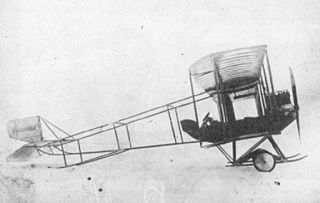
The Sikorsky S-6 was a Russian single engine experimental aircraft similar to the S-5, built in 1911 by Igor Sikorsky.
The Aerial Service Mercury Senior, Aerial Mercury Senior or just Mercury Senior was a US biplane mailplane designed to operate at night between New York City and Chicago. A different, smaller, lower wing improved its performance for daytime flights. One was built and used by the United States Post Office Department.
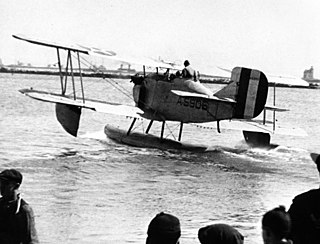
G Elias & Brother was and American manufacturer of cabinets and aircraft based in Buffalo, New York in the 1920s. A.G. Elias sat on the Manufacturers Aircraft Association's board of directors along with President Frank H. Russell, VP Glenn L. Martin, Charles L. Laurence, Chance M. Vought, S.S. Bradley, George P. Tidmarsh, and Donald Douglas. E.J Elias promoted the construction of a Buffalo municipal airport to aid the local fledgling airplane industry of five aviation companies constructing airplanes and airplane parts. From 1920 to 1925, Elias company's chief engineer, David Earle Dunlap (1896-1957), designed the Elias EM-2 Expeditionary planes. He designed the NBS-3 bomber fuselage and the Elias M-1 Mail plane. Dunlap's Elias TA-1 design was the first United States Army Air Corps Trainer to have a radial engine. After tests a McCook Field, the Army Air Corps selected other manufacturers over the Elias bomber and trainer. The company designed the Elias EM-1 to meet requirements for a multirole amphibian marine expeditionary aircraft. Elias delivered six production Elias EM-2 aircraft with Liberty engines to the United States Navy in 1922.
The Western Airplane King Bird, named after the tyrant flycatcher (Western) Kingbird, was a 1920s US civil transport accommodating three passengers in open cockpits. Only one was built.

The Thunderbird W-14 was a small, three seat American passenger transport, first flown in 1926, entering production, significantly improved, in 1927 with several different engine options. About 40-50 were built before the financial collapse of the company in 1929.